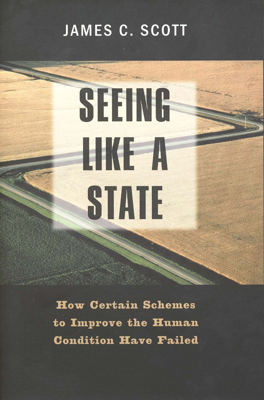Soviet Collectivization, Capitalist Dreams
Soviet Collectivization and the Pursuit of Industrial Agriculture
The sweeping reforms of Soviet agriculture under Stalin represent a stark example of authoritarian high modernism shaped by historical precedents and cultural imperatives. The overthrow of tsarist autocracy and the destructive outcomes of war and revolution provided an environment akin to an erased landscape, ripe for radical redesign akin to building Brasilia or other planned cities. However, this came at substantial human and social costs due to the drastic reorganization of peasant life and production in pursuit of state goals.
Central to Soviet high modernism was a strong leaning towards uniform, mechanized, and large-scale farming systems. This approach built upon earlier Russian absolutism where centralization was preferred under the guise of enlightenment but served the interests of those in power more than it liberated the population. The drive to redesign the agricultural landscape fundamentally, especially through collectivization, aimed to replace the traditional peasant commune with large, collective farms. The state's drive for control and grain procurement explained the aggressive policies towards collectivization, disregarding the deep ecological and social understanding embedded in traditional rural practices.
The planners' vision was a landscape where everything was ordered and predictable, from crop production to social organization. This vision failed to accommodate the complex, local knowledge networks essential to agriculture, leading to inefficiency and resistance. Despite the intention to modernize and unify agricultural practices, the imposition of unrealistic plans without local adaptation led to widespread failure and suffering.
The Soviet-American exchange on industrial agriculture further highlights the cross-cultural fascination with applying industrial principles to farming. American agronomists admired Soviet ambition despite political differences, driven by a shared belief in scientific progress that bridetailed with Soviet aspirations for industrial-scale farming. This transnational dialogue shaped significant agricultural policies and practices, albeit often disconnected from the practical and ecological realities on the ground.
The Downfall of High Modernism in Agriculture
Despite the enthusiasm for transforming agriculture on a monumental scale, the practical outcomes were often grim. The Soviet collectivization efforts, marked by violence and coercion, stripped the peasantry of their autonomy and traditional practices, attempting to mold them into a proletarian mold unfit for agricultural communities. This top-down imposition ignored the intrinsic variability and complexity of agricultural ecosystems and human relationships tied to the land.
The transformation sought by the Bolsheviks was not just physical but cultural—a revolution that encompassed all aspects of life, aiming to forge a new Soviet person through altered farming practices, education, and communal living. Yet, the results fell short of these revolutionary ideals, entrenched instead in a new form of serfdom that bound peasants to state-run farms, reducing their lives to units of production within a grand, impersonal plan.
High modernism, as manifested in Soviet agricultural policies, served as a cautionary tale of the perils inherent in disregarding local context and expertise in favor of abstract ideals. The legacy of this era reflects a deep-seated conflict between state-driven abstraction and the lived reality of agricultural communities, underscoring the limits of authoritarian planning and the enduring value of local knowledge and practices. Thus, the Soviet experience illuminates the broader implications of high modernist ambitions across different domains, reinforcing the need for approaches that harmonize state goals with local realities and human needs.
